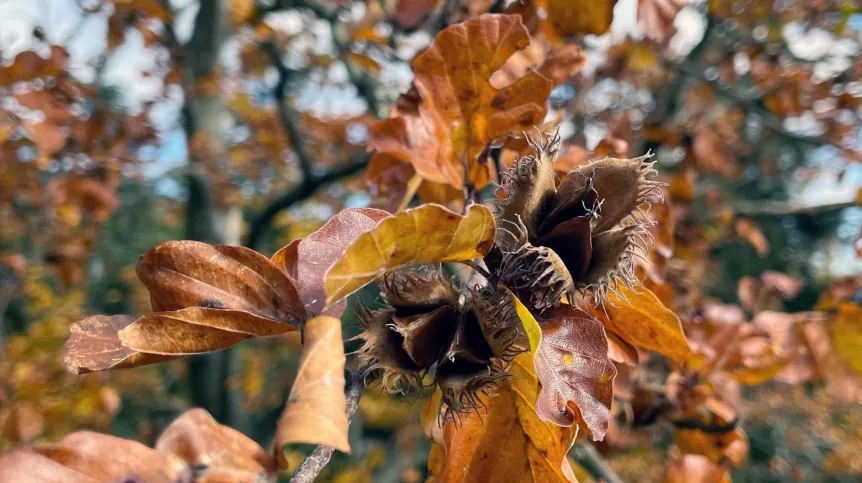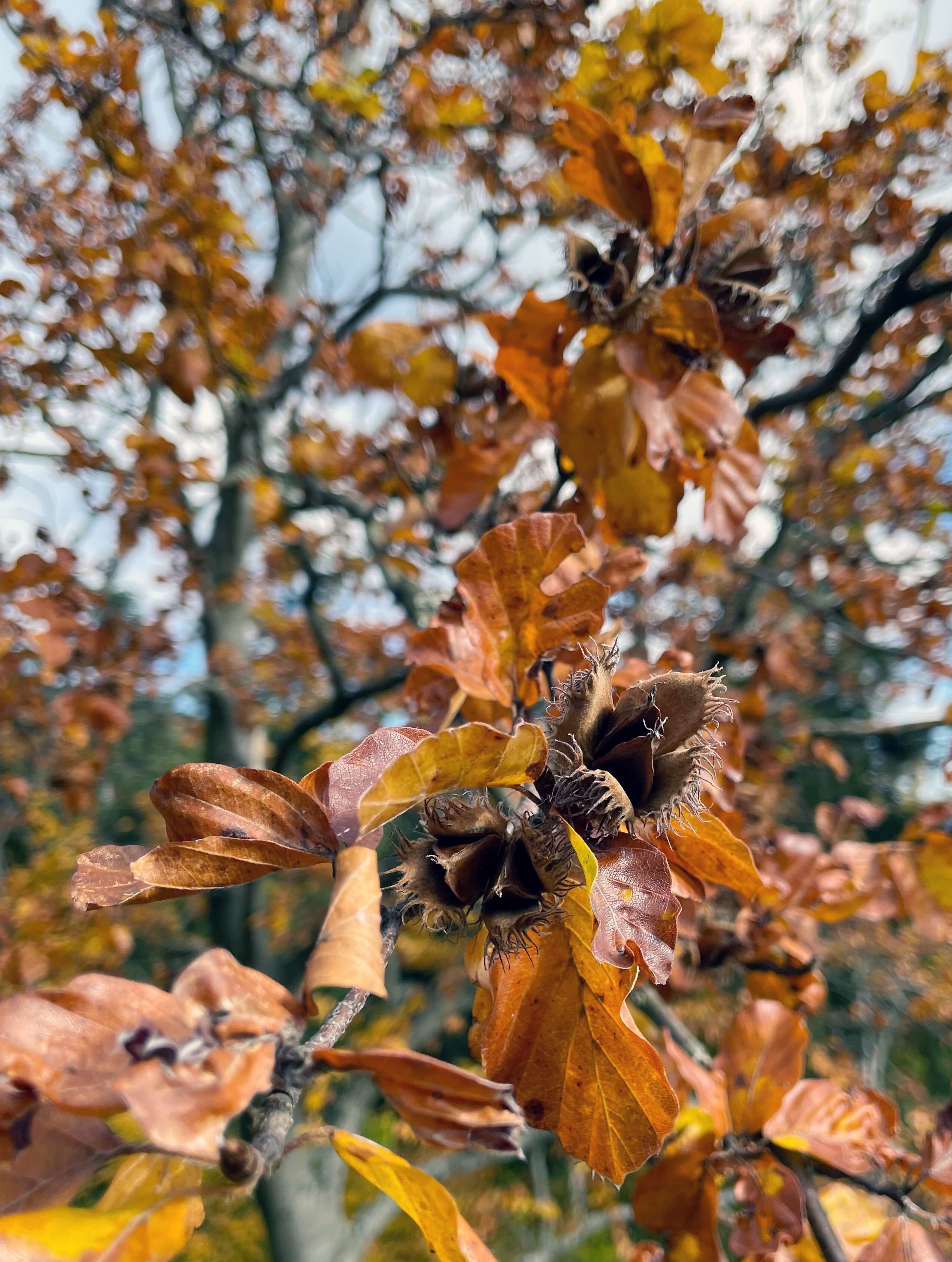
Rising summer temperatures cause beech trees to produce seeds more often, while growing more slowly, according to a study by scientists from Poland, the UK and New Zealand. The publication on this topic appeared in PNAS.
Importantly, more frequent seed production does not translate into a larger number of seedlings, because beech trees no longer bloom as synchronously, pollination becomes less effective, and a larger percentage of seeds are eaten by insects and rodents. Therefore, the number of young seedlings is decreasing, which reduces the chances of survival of the species in the future, the authors of the study emphasise.
The research of the international team on the European beech (Fagus sylvatica) in England has been conducted for over four decades. During this period, the scientists meticulously counted the seeds produced by the trees. In 2022, they took the so-called 'cores' from the trunks of 57 trees and analysed the width of the rings to see how the annual wood growth had changed over the last 43 years.
It turned out that in the studied populations, changes in seed production caused a visible decrease in the growth of beech wood. Importantly, in the region of England where the collected data came from, no significant trend of increasing summer droughts was recorded during the same period. This means that hydrological conditions did not change dramatically at the study site, and yet beech trees are growing more slowly.

According to the scientists, the factor responsible for the tree growth slowdown is the change in the frequency of seed production in response to rising summer temperatures.
'This is a completely new mechanism through which climate change can inhibit tree growth. Previously, scientists focused mainly on the direct effects of droughts or heat, while more regular flowering and fruiting deprive trees of some of the resources needed for growth', comments the study co-author, Professor Michał Bogdziewicz from the Forest Biology Centre at Adam Mickiewicz University in Poznań.
Like many other tree species, the European beech reproduces during so-called 'seed years', i.e. periods in which it produces thousands of seeds en masse, in a coordinated manner. They are interspersed with years with almost zero seed production, when trees usually save energy. This strategy ensures successful pollination and reduces losses caused by animals that eat seeds.
However, the data collected by the authors of the study show that with climate warming, beech trees began to change the rhythm of their seed years. According to Andrew Hacket-Pain from the University of Liverpool, one of the authors of the publication, in England after 2005, beech trees increasingly produced seeds, but at the same time, seed years were no longer as fertile or as coordinated on a population scale. Researchers call this phenomenon the masting breakdown.
They remind that intensive flowering and seed production require large amounts of energy. Anthe example are tomatoes grown in the garden - when they have too many fruits, the growth and condition of the bushes can suffer. In the case of trees, these processes extend over years. Measurements of beech tree rings show that more frequent seed production was associated with a simultaneous decrease in annual wood growth by an average of 28 percent - from 1.6 mm to approx. 1.16 mm over four decades.
According to the researchers, this phenomenon is worrying because investing in seeds limits the growth of trees, and at the same time does not translate into an increase in the number of seedlings. This is due to the fact that beech trees no longer bloom as synchronously, pollination becomes less effective, and seed consumers (e.g. insects and rodents) have more years with a moderate number of seeds to eat, and eat a larger percentage of them. The effect is a smaller number of young seedlings, and consequently lower chances of regeneration and survival of the species in the future.
'This is a disturbing combination of factors, a kind of +perfect storm+. More years when beech trees produce seeds depletes the resources of trees, while not translating into more seedlings, because the seeds are eaten or there is no effective pollination', comments Jakub Szymkowiak, PhD, from Adam Mickiewicz University, co-author of the paper.
Moreover, the annual growth of the trunk is not only a measure of the tree's growth, but also an indicator of its condition. Slower growth may mean greater susceptibility to diseases and droughts, and ultimately may even lead to an increase in tree mortality in the face of further climate warming, the scientists assess.
They note that beech trees are among the most important tree species in Europe, and their condition significantly affects the carbon balance and biodiversity of our forests. Meanwhile, the processes observed in England may also take place in other regions of Europe.
'Summers are getting warmer, so a similar +masting breakdown+ can be observed in many populations, including Polish ones', says the study co-author, Maciej Barczyk, PhD, from the AMU Forest Biology Center. He adds that the results of the latest studies show that climate can affect forests in a more subtle way than extreme weather phenomena (sudden droughts, extreme heat), i.e. through changes in the reproductive strategies of trees.
'This is an important warning that in an age of rapid climate warming we must not forget about the long-term, indirect effects of these changes. Similar relationships can occur in many other species, and understanding them is crucial if we want to effectively protect biodiversity and ecosystem services of forests', Szymkowiak concludes.
The research is financed by the Polish National Science Centre. (PAP)
PAP - Science in Poland
jjj/ zan/













